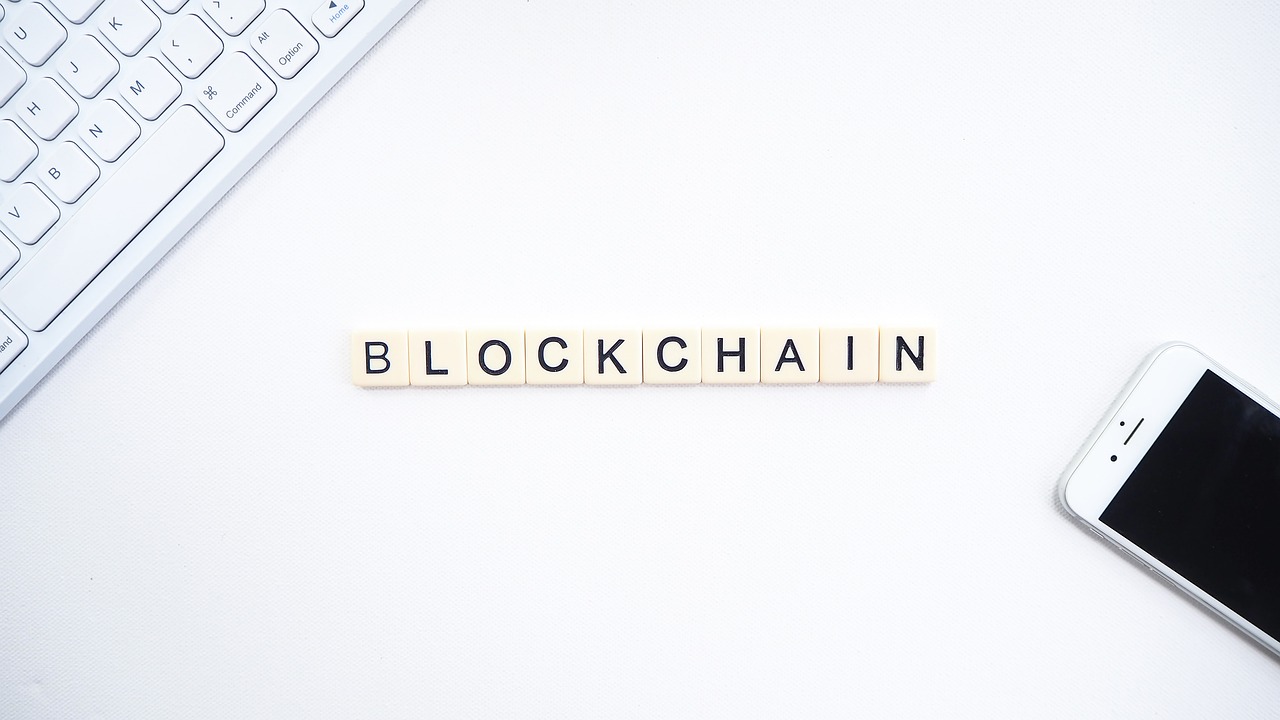How Blockchain Can Improve the Efficiency of Public Services
In an era where technology is rapidly evolving, the integration of blockchain technology into public services is not just an innovation; it’s a necessity. Imagine a world where government operations are not only efficient but also transparent and accountable. This is the transformative potential that blockchain brings to the table. By enhancing the way public services operate, blockchain can significantly improve citizen engagement and trust in government processes. But how does this work? Let’s dive into the fundamentals of blockchain to understand its impact on public services.
At its core, blockchain technology is a decentralized ledger system that records transactions across multiple computers. This means that no single entity has control over the entire chain, making it inherently secure and resistant to tampering. Each block in the chain contains a number of transactions, and once a block is filled, it is added to the chain in a linear, chronological order. The beauty of blockchain lies in its transparency; anyone with access to the blockchain can view the entire history of transactions, which fosters a sense of trust among users. In public services, this could translate to more efficient operations, as every transaction related to public funds or resources can be tracked and audited in real-time.
One of the most significant advantages of blockchain technology is its ability to enhance transparency in government operations. With blockchain, citizens can gain real-time access to information regarding how public funds are allocated and spent. This transparency can drastically reduce corruption, as it becomes much harder for illicit activities to go unnoticed. Imagine being able to see exactly where every tax dollar is going, or how resources are being distributed for public projects. This level of transparency fosters trust among citizens, as they become more aware of the government's actions and decisions.
Another critical feature of blockchain is its immutability. Once a record is added to the blockchain, it cannot be altered or deleted. This creates a reliable audit trail that enhances accountability in public services. For instance, if a government agency makes a decision regarding funding for a community project, that decision is recorded on the blockchain. Citizens can easily verify these transactions, ensuring that government entities are held accountable for their actions. This not only builds trust but also encourages responsible governance.
Several real-world examples showcase how blockchain has been successfully implemented in public services. For instance, in Estonia, blockchain technology is used to secure health records, ensuring that only authorized personnel can access sensitive information. This has not only improved efficiency but has also enhanced the privacy and security of citizens' data. Similarly, in Georgia, blockchain is used for land registration, significantly reducing fraud and streamlining the process of property transactions. These case studies illustrate the tangible benefits of adopting blockchain in public services and provide valuable lessons for broader implementation.
Despite its potential, the adoption of blockchain in public services is not without challenges. Issues such as scalability, regulatory hurdles, and the need for technological infrastructure must be addressed to fully realize the benefits of blockchain. For instance, while blockchain can handle a significant number of transactions, the infrastructure must be robust enough to support widespread use. Additionally, regulatory frameworks need to evolve to accommodate this new technology, ensuring that it is used ethically and effectively.
Blockchain technology can also empower citizens by enabling greater participation in decision-making processes. Through decentralized platforms, citizens can provide feedback on public services, vote on community projects, and engage in discussions about local governance. This level of engagement ensures that public services are more aligned with community needs and expectations. Imagine being able to vote on how your local government allocates funds for community projects directly through a secure blockchain platform. This not only enhances participation but also fosters a sense of ownership among citizens.
By automating administrative tasks through smart contracts, blockchain technology can significantly reduce bureaucratic inefficiencies. Smart contracts are self-executing contracts with the terms of the agreement directly written into code. This means that once certain conditions are met, the contract executes automatically, eliminating the need for intermediaries. In public institutions, this could lead to faster service delivery and improved resource allocation, as processes become more efficient and less prone to human error.
Blockchain's secure and transparent nature can significantly reduce opportunities for fraud and mismanagement in public services. By ensuring that records are tamper-proof and easily accessible, blockchain helps to ensure that resources are used effectively and for their intended purposes. This is particularly important in areas such as welfare distribution, where funds can often be misallocated or misused. With blockchain, every transaction is recorded and can be traced back to its origin, making it much harder for fraud to occur.
Looking ahead, the future of blockchain in public services appears promising. Emerging trends indicate that collaborative models between governments and private sectors will become increasingly prevalent. This could lead to innovative solutions that further enhance public service efficiency, such as shared blockchain networks that allow for seamless data sharing and communication among various government agencies. As technology continues to evolve, the potential applications of blockchain in public services will likely expand, offering even more opportunities for improvement.
- What is blockchain technology? - Blockchain is a decentralized ledger system that records transactions across multiple computers, ensuring security and transparency.
- How can blockchain improve public services? - By enhancing transparency, accountability, and efficiency, blockchain can transform how public services operate, leading to better citizen engagement and trust.
- What are smart contracts? - Smart contracts are self-executing contracts with the terms of the agreement directly written into code, allowing for automated processes without intermediaries.
- What challenges does blockchain face in public services? - Challenges include scalability, regulatory hurdles, and the need for technological infrastructure to support its widespread adoption.

Understanding Blockchain Technology
Blockchain technology is often described as a revolutionary force, akin to the internet's impact on communication and information sharing. At its core, blockchain is a decentralized digital ledger that records transactions across many computers in such a way that the registered transactions cannot be altered retroactively. This unique characteristic not only enhances security but also builds a foundation for trust among users. Imagine a public library where every book borrowed is recorded in a ledger that everyone can see, but no one can change. This is the essence of how blockchain operates.
The fundamental principles of blockchain revolve around transparency, security, and decentralization. When a transaction occurs, it is verified by a network of computers (or nodes) before being added to a block. Once a block is filled with transactions, it is chained to the previous block, creating a chronological record that is immutable. This means that once data is recorded, it cannot be altered without the consensus of the network, making it nearly impossible for fraud to occur.
To better understand how blockchain functions, let's break down its key components:
- Decentralization: Unlike traditional databases that rely on a central authority, blockchain distributes data across a network, reducing the risk of a single point of failure.
- Cryptography: Blockchain employs advanced cryptographic techniques to secure transactions, ensuring that only authorized participants can access or alter the data.
- Consensus Mechanisms: These are protocols that all nodes in the network follow to agree on the validity of transactions. Popular methods include Proof of Work (PoW) and Proof of Stake (PoS).
This innovative technology is not just limited to cryptocurrencies like Bitcoin; it has the potential to transform various sectors, including public services. By implementing blockchain, governments can enhance efficiency, improve accountability, and foster greater citizen engagement. However, understanding its mechanics is crucial for stakeholders who wish to leverage this technology effectively.
In summary, blockchain technology is a powerful tool that can reshape how we think about data management and security. Its decentralized nature, combined with robust security features, offers a promising solution to many challenges faced in public services today. As we delve deeper into its applications, the transformative potential of blockchain becomes increasingly evident, paving the way for a more transparent and efficient governance system.

Enhancing Transparency in Government Operations
In today's fast-paced world, where information flows like a river, the need for transparency in government operations has never been more critical. Blockchain technology, with its unique characteristics, offers a revolutionary approach to enhancing transparency in public services. Imagine a world where every transaction, every decision made by government entities, is recorded on a secure, decentralized ledger that anyone can access. This is not just a dream; it's a reality that blockchain is making possible.
The inherent features of blockchain, such as its decentralization and immutability, allow for real-time access to information, reducing the chances of corruption and enhancing trust among citizens. With blockchain, the days of backdoor deals and opaque financial transactions could be numbered. Citizens can now hold their governments accountable, as they can track how public funds are used and where resources are allocated. It's like having a magnifying glass that reveals the inner workings of government, ensuring that everything is above board.
One of the most powerful aspects of blockchain is its ability to create immutable records. Once a transaction is recorded on the blockchain, it cannot be altered or deleted. This feature is crucial for maintaining an accurate and trustworthy audit trail. For instance, if a government agency allocates funds for a public project, the details of that transaction—including the amount, the purpose, and the recipients—are permanently etched into the blockchain. This means that anyone can verify these details at any time, promoting accountability and discouraging mismanagement.
Imagine a scenario where citizens can easily access a comprehensive history of government transactions related to public spending. This is where the power of blockchain truly shines. The creation of immutable records ensures that all actions taken by government entities are transparent and can be scrutinized by the public. This level of accountability fosters a culture of trust between citizens and their government.
To illustrate this further, consider the following table that outlines how blockchain enhances transparency in various areas of government operations:
| Area of Operation | Traditional Approach | Blockchain Approach |
|---|---|---|
| Public Fund Allocation | Opaque, difficult to track | Transparent, easily verifiable |
| Tax Collection | Susceptible to fraud | Secure, tamper-proof records |
| Contract Management | Complex, prone to disputes | Smart contracts automate and enforce agreements |
The adoption of blockchain in these areas not only simplifies processes but also builds a foundation of trust between the government and its citizens. When people see that their government is committed to transparency, they are more likely to engage with public services and participate in civic activities.
However, while the benefits of blockchain for enhancing transparency are clear, there are challenges that must be addressed. Issues such as scalability and regulatory hurdles can impede the full realization of blockchain's potential in public services. It’s essential for governments to invest in the necessary technological infrastructure and create a supportive regulatory environment to facilitate this transition.
In conclusion, blockchain has the potential to transform the way governments operate, making them more transparent, accountable, and trustworthy. By embracing this technology, public services can become more aligned with the needs and expectations of citizens, ultimately leading to a more engaged and informed populace.
- What is blockchain technology? Blockchain is a decentralized digital ledger that securely records transactions across multiple computers.
- How does blockchain enhance transparency? By providing an immutable record of transactions that can be publicly accessed and verified.
- What are the challenges of implementing blockchain in public services? Key challenges include scalability, regulatory hurdles, and the need for technological infrastructure.

Immutable Records and Audit Trails
One of the most revolutionary aspects of blockchain technology is its ability to create immutable records. This means that once information is entered into the blockchain, it cannot be altered or deleted. Imagine a digital ledger where every transaction is etched in stone, providing a permanent record that can be referenced at any time. This characteristic is crucial for public services, where transparency and accountability are paramount. With immutable records, citizens can trust that the information provided by their government is accurate and unchangeable, fostering a sense of security and reliability.
Moreover, the creation of audit trails through blockchain technology enhances the ability to track and verify governmental actions. Each transaction or decision made by a public entity is recorded chronologically, allowing for easy access and review. This level of detail is a game-changer when it comes to ensuring that public funds are managed responsibly. For instance, if a government project receives funding, the blockchain can provide a transparent trail showing how the money was allocated, spent, and accounted for, which can be crucial in preventing mismanagement and corruption.
To illustrate the impact of immutable records and audit trails, consider the following table that outlines the benefits of implementing blockchain in public services:
| Benefit | Description |
|---|---|
| Transparency | Real-time access to data allows citizens to see how public resources are being used. |
| Accountability | Immutable records ensure that government entities can be held accountable for their actions. |
| Fraud Prevention | With a secure and transparent system, opportunities for fraud are significantly reduced. |
| Efficiency | Streamlined processes reduce the time and resources spent on auditing and verifying transactions. |
In addition to these benefits, the use of blockchain for immutable records and audit trails can also enhance citizen engagement. When citizens have access to reliable data, they are more likely to participate in discussions about government spending and policies. This creates a virtuous cycle where informed citizens can hold their government accountable, leading to better decision-making and improved public services.
In conclusion, the implementation of blockchain technology in public services not only provides immutable records and audit trails but also empowers citizens and enhances the overall efficiency of government operations. By ensuring that every action taken by public entities is documented and verifiable, blockchain can help build a more transparent and trustworthy relationship between governments and their citizens.

Case Studies of Successful Implementations
As we delve into the practical applications of blockchain technology in public services, it’s crucial to highlight some real-world examples that showcase its transformative potential. One of the most compelling case studies comes from Estonia, a pioneer in digital governance. Estonia has integrated blockchain technology into its e-government services, allowing citizens to access secure digital identities, health records, and even voting systems. This integration not only enhances transparency but also significantly reduces the risk of identity fraud, making citizens feel more secure about their personal data.
Another notable example is the use of blockchain in Dubai, where the government aims to become the world’s first blockchain-powered city by 2020. Dubai’s initiative involves using blockchain to streamline various public services, including visa applications and property registrations. The government estimates that this move could save millions of hours of paperwork and enhance the efficiency of service delivery. By digitizing these processes, Dubai is setting a benchmark for other cities worldwide, showcasing how blockchain can transform bureaucratic systems into more agile and user-friendly services.
In the realm of supply chain management, the United Nations World Food Programme (WFP) has implemented blockchain technology to deliver aid more effectively. Through its “Building Blocks” project, the WFP uses blockchain to track food distributions in refugee camps, ensuring that resources are allocated properly and transparently. This initiative not only reduces fraud but also increases accountability, as every transaction is recorded in an immutable ledger, providing a clear audit trail.
Furthermore, in the United States, the state of Wyoming has taken significant steps to embrace blockchain technology in its legislative framework. By creating a favorable environment for blockchain startups and establishing laws that recognize digital assets, Wyoming is paving the way for innovative applications within public services. This proactive approach encourages collaboration between the government and tech companies, fostering a culture of innovation that can lead to more efficient public services.
These case studies illustrate the diverse applications of blockchain technology across the globe. They highlight not only the potential benefits but also the lessons learned in integrating such advanced technology into public service frameworks. As more governments recognize the advantages of blockchain, we can expect to see a surge in innovative solutions that enhance efficiency, transparency, and citizen engagement.
- What is blockchain technology?
Blockchain is a decentralized and secure ledger system that records transactions across multiple computers, ensuring that the data is immutable and transparent. - How can blockchain improve public services?
By enhancing transparency, reducing fraud, streamlining processes, and increasing citizen engagement, blockchain can significantly improve the efficiency and effectiveness of public services. - What are some challenges of implementing blockchain in public services?
Challenges include scalability issues, regulatory hurdles, and the need for technological infrastructure to support blockchain applications.

Challenges and Limitations
While the potential of blockchain technology in enhancing public services is immense, it is essential to recognize the that accompany its implementation. First and foremost, the issue of scalability looms large. As more transactions occur on a blockchain, the system can become congested, leading to slower processing times. This is particularly concerning for public services that require quick access to information and rapid response times. Imagine a busy highway during rush hour; if too many cars try to merge into one lane, traffic comes to a standstill. Similarly, a congested blockchain can hinder efficiency.
Another significant hurdle is the regulatory landscape. Governments around the world are still grappling with how to regulate blockchain technology. The lack of clear guidelines can create uncertainty for public institutions considering its adoption. This regulatory ambiguity can deter investment in necessary infrastructure, leaving many organizations hesitant to embrace the technology. It's like trying to navigate a maze without a map; without direction, it's easy to get lost.
Furthermore, the technological infrastructure needed to support blockchain systems is often lacking in many public institutions. Upgrading existing systems to accommodate blockchain can be a costly and time-consuming endeavor. Many governments operate on tight budgets, and reallocating funds for new technology can be a daunting task. For instance, if a government agency is already stretched thin, adding new technology might feel like trying to fit a square peg into a round hole.
Moreover, there is the challenge of public understanding and acceptance of blockchain technology. Many citizens are still unfamiliar with how blockchain works, which can lead to skepticism and resistance to its adoption. Education and outreach are crucial to ensure that the public understands the benefits and functionalities of blockchain. Without this knowledge, the technology may be viewed with suspicion rather than embraced as a tool for positive change.
Lastly, the issue of interoperability between different blockchain systems poses another challenge. For blockchain to be truly effective in public services, various systems must be able to communicate with each other seamlessly. This requires standardization, which is currently lacking in the blockchain space. Think of it as trying to connect different brands of smartphones; if they don't have compatible charging ports, you won’t be able to use them together.
In summary, while blockchain technology holds great promise for enhancing the efficiency of public services, it is not without its challenges. Addressing issues related to scalability, regulation, infrastructure, public understanding, and interoperability will be crucial for its successful implementation. By overcoming these hurdles, governments can harness the full potential of blockchain to create a more efficient, transparent, and accountable public service system.
- What is blockchain technology?
Blockchain is a decentralized and secure ledger system that allows for the transparent recording of transactions across multiple computers.
- How can blockchain improve public services?
Blockchain can enhance transparency, reduce fraud, streamline processes, and improve citizen engagement in public services.
- What are the main challenges of implementing blockchain?
The main challenges include scalability, regulatory hurdles, technological infrastructure, public understanding, and interoperability.
- Can blockchain reduce corruption in public services?
Yes, the transparency and immutability of blockchain records can significantly reduce opportunities for corruption and mismanagement.

Citizen Engagement and Participation
In an age where citizen voices often seem drowned out by the bureaucratic noise, blockchain technology emerges as a beacon of hope. Imagine a world where every citizen has the power to influence decisions that affect their lives directly. With blockchain, this is not just a dream; it’s becoming a reality. By leveraging the decentralized nature of blockchain, governments can create platforms that facilitate greater participation in decision-making processes. This means that citizens can have a say in how public services are designed and delivered, ensuring that their needs and expectations are met.
One of the most exciting aspects of blockchain is its ability to foster transparency. When citizens can easily access information about government operations, they are more likely to engage and participate. For example, consider a city that uses a blockchain-based platform to share real-time data about public spending. Citizens can track how their taxes are being used, which not only enhances accountability but also encourages them to voice their opinions on budget allocations. This level of transparency can transform the relationship between citizens and their governments, shifting it from one of mistrust to collaboration.
Moreover, blockchain can facilitate feedback mechanisms that allow citizens to express their views on public services. Through decentralized applications (dApps), individuals can submit feedback, report issues, or even vote on community projects. This creates a feedback loop where public services can be continuously improved based on citizen input. Think of it as a digital town hall meeting where everyone has a voice, and every opinion matters. This kind of engagement not only empowers citizens but also helps governments to better align their services with the actual needs of the community.
However, the journey towards enhanced citizen engagement through blockchain is not without its challenges. There are concerns regarding digital literacy, as not all citizens may be familiar with blockchain technology. To address this, governments can implement educational programs that teach citizens how to navigate these new platforms effectively. Additionally, ensuring equitable access to technology is crucial so that every citizen, regardless of their socio-economic status, can participate in this new digital democracy.
In summary, blockchain technology holds the potential to revolutionize citizen engagement and participation in public services. By providing transparent platforms for feedback and decision-making, it empowers citizens to take an active role in their governance. As we move forward, it will be essential for governments to embrace these innovations while addressing the challenges that come with them, ultimately creating a more participatory and engaged society.
- What is blockchain technology? Blockchain is a decentralized and secure ledger system that records transactions across many computers so that the record cannot be altered retroactively.
- How does blockchain enhance citizen engagement? By providing transparent platforms for feedback and decision-making, blockchain empowers citizens to actively participate in governance.
- What challenges does blockchain face in public services? Challenges include scalability, regulatory hurdles, and the need for technological infrastructure.

Streamlining Administrative Processes
In today's fast-paced world, the efficiency of public services is more crucial than ever. Imagine a scenario where citizens can access services without the usual bureaucratic red tape. This is where blockchain technology steps in, acting as a powerful ally in streamlining administrative processes. By automating tasks through smart contracts, blockchain can significantly reduce delays and errors, making public service delivery not only faster but also more reliable.
Smart contracts are self-executing contracts with the terms of the agreement directly written into code. They operate on blockchain networks, which means they are decentralized and tamper-proof. This feature alone can revolutionize how public institutions handle administrative tasks. For instance, consider the process of issuing permits or licenses. Traditionally, this involves multiple steps and approvals, often leading to long waiting times. With smart contracts, once the necessary conditions are met, the contract automatically executes, delivering the permit directly to the applicant without any human intervention. This not only speeds up the process but also minimizes the chances of corruption or favoritism.
Moreover, the use of blockchain can enhance the accuracy of data management. Public institutions often deal with vast amounts of data, and the risk of errors is high when information is manually processed. By implementing blockchain technology, all data entries are recorded in a secure and immutable manner. This means that once information is added to the blockchain, it cannot be altered or deleted. For example, if a citizen applies for social services, their application data is securely stored on the blockchain, ensuring that it is accessible only to authorized personnel. This level of security and transparency not only increases trust among citizens but also ensures that public resources are allocated appropriately.
To illustrate the potential impact of blockchain on administrative efficiency, let's take a look at a few key benefits:
- Reduced Processing Times: By automating workflows, public institutions can drastically cut down the time taken for service delivery.
- Cost Efficiency: Streamlining processes can lead to significant cost savings, allowing governments to allocate resources more effectively.
- Enhanced Accountability: With every transaction recorded on the blockchain, it becomes easier to track decisions and hold individuals accountable.
While the benefits are clear, implementing blockchain technology in public services does come with its challenges. The transition requires substantial investment in technology and training. However, the long-term gains in efficiency and citizen satisfaction are well worth the effort. As governments begin to recognize the potential of blockchain, we can expect to see a shift towards more innovative and responsive public service models.
In conclusion, the integration of blockchain technology into administrative processes is not just a trend; it's a necessary evolution. By embracing this revolutionary technology, public institutions can enhance their operational efficiency, reduce costs, and ultimately provide better services to citizens. The future of public services is bright, and blockchain is poised to play a pivotal role in shaping it.
Q1: What are smart contracts?
A1: Smart contracts are automated agreements that execute actions when pre-defined conditions are met, all recorded securely on a blockchain.
Q2: How does blockchain improve transparency in public services?
A2: Blockchain provides a public ledger that is immutable, meaning all transactions can be verified and audited, reducing opportunities for corruption.
Q3: What challenges does blockchain face in public service implementation?
A3: Key challenges include scalability, regulatory hurdles, and the need for technological infrastructure to support its integration.

Reducing Fraud and Mismanagement
Fraud and mismanagement in public services can feel like a persistent storm cloud, casting a shadow over the trust citizens place in their government. Fortunately, blockchain technology emerges as a beacon of hope, offering solutions that can significantly mitigate these issues. By leveraging its secure and transparent nature, blockchain creates an environment where accountability thrives, and the opportunities for fraudulent activities are drastically reduced.
At its core, blockchain operates as a decentralized ledger, meaning that every transaction or alteration is recorded across multiple nodes in the network. This transparency ensures that any attempt at manipulation is immediately visible to all participants, much like how a clear glass window allows everyone to see what's happening inside a room. When public transactions are recorded on a blockchain, they become immutable, meaning they cannot be altered or deleted without consensus from the network. This characteristic is crucial in preventing fraud, as it creates a reliable history of all actions taken.
Moreover, the implementation of smart contracts—self-executing contracts with the terms of the agreement directly written into code—can automate and enforce compliance in public service transactions. For instance, when funds are allocated for a specific project, smart contracts can ensure that those funds are only released when predefined conditions are met. This eliminates the risk of mismanagement, as funds cannot be diverted for unauthorized uses. Imagine a vending machine: you insert money, select your item, and only when the conditions are met does the machine dispense what you paid for. This is how smart contracts function, ensuring that every transaction is executed precisely as intended.
To further illustrate the impact of blockchain in reducing fraud, consider the following table showcasing some key benefits:
| Benefit | Description |
|---|---|
| Transparency | All transactions are visible to all parties, reducing the likelihood of deceit. |
| Immutability | Once recorded, data cannot be altered, ensuring a reliable audit trail. |
| Automation | Smart contracts automate processes, reducing human error and manipulation. |
| Decentralization | No single point of control, making it harder for fraudsters to exploit the system. |
In addition to these benefits, blockchain can also facilitate better reporting and auditing processes. With real-time data available on a public ledger, auditors can quickly access the information they need, making it easier to identify discrepancies or irregularities. This proactive approach is akin to having a security camera monitoring a bank; if something unusual happens, it can be spotted immediately, and action can be taken swiftly.
However, while blockchain technology offers a promising solution to combat fraud and mismanagement, it is essential to recognize that it is not a silver bullet. The successful implementation of blockchain requires a robust infrastructure, regulatory support, and a cultural shift towards transparency and accountability within public institutions. Nevertheless, as governments continue to explore innovative technologies, the potential for blockchain to revolutionize public services and restore citizen trust is undeniably exciting.
In conclusion, the journey towards reducing fraud and mismanagement in public services is ongoing, but with the adoption of blockchain technology, we are taking significant steps in the right direction. By fostering an environment of transparency, accountability, and efficiency, blockchain not only protects public resources but also enhances the overall trust citizens have in their government.
- What is blockchain technology? Blockchain is a decentralized digital ledger that records transactions across many computers in a way that the registered transactions cannot be altered retroactively.
- How does blockchain reduce fraud? By providing a transparent and immutable record of transactions, blockchain makes it difficult for fraudulent activities to go unnoticed.
- What are smart contracts? Smart contracts are self-executing contracts with the terms of the agreement directly written into code, ensuring that transactions are carried out automatically when conditions are met.
- Can blockchain completely eliminate fraud? While blockchain significantly reduces opportunities for fraud, it is not a complete solution and must be part of a broader strategy that includes regulatory and cultural changes.

Future Trends in Blockchain for Public Services
The future of blockchain technology in public services is not just a fleeting trend; it’s a profound shift that promises to reshape how governments interact with their citizens. As we look ahead, several emerging trends are poised to enhance the efficiency and effectiveness of public service delivery. One of the most exciting developments is the integration of artificial intelligence (AI) with blockchain. This combination can lead to smarter decision-making processes, where AI analyzes data stored on a blockchain to provide insights that can improve service delivery and policy formulation.
Moreover, collaborative models between governments and private sectors are gaining traction. These partnerships can leverage the strengths of both entities, where private organizations can offer technological innovations while public institutions provide regulatory oversight and trust. For instance, pilot projects are emerging that explore how blockchain can streamline processes like tax collection and public procurement, ensuring that these operations are more transparent and efficient.
Another trend to watch is the rise of decentralized autonomous organizations (DAOs). These entities operate on blockchain technology and can facilitate community-driven governance. Imagine a scenario where citizens can vote on local initiatives using a secure blockchain platform, ensuring their voices are heard in decision-making processes. This could significantly increase citizen engagement and trust in government operations, as people see their input directly influencing outcomes.
Furthermore, the concept of digital identity management using blockchain is gaining momentum. With a secure and immutable digital identity, citizens can interact with government services more efficiently, reducing the need for cumbersome paperwork and verification processes. This can lead to a more streamlined experience for citizens, allowing them to access services quickly and securely.
To illustrate these trends, consider the following table that highlights potential applications of blockchain technology in various public service sectors:
| Sector | Potential Application | Benefits |
|---|---|---|
| Healthcare | Secure patient data management | Enhanced privacy and data integrity |
| Voting | Blockchain-based voting systems | Improved transparency and reduced fraud |
| Public Procurement | Smart contracts for procurement processes | Increased efficiency and accountability |
| Social Services | Digital identity verification | Streamlined access to services |
Lastly, as we embrace these future trends, it’s essential to address the challenges that come with them. Issues such as regulatory compliance, technological infrastructure, and public awareness must be tackled to ensure that blockchain can reach its full potential in public services. Continuous dialogue between stakeholders, including government agencies, technology providers, and citizens, will be crucial in shaping a future where blockchain enhances public service efficiency.
- What is blockchain technology?
Blockchain is a decentralized digital ledger that securely records transactions across multiple computers, ensuring that the information is tamper-proof and transparent.
- How can blockchain improve public services?
By enhancing transparency, reducing fraud, and streamlining administrative processes, blockchain can lead to more efficient public services and increased citizen trust.
- What are smart contracts?
Smart contracts are self-executing contracts with the terms of the agreement directly written into code, which can automate processes and reduce bureaucratic inefficiencies.
- Are there any challenges to implementing blockchain in public services?
Yes, challenges include scalability, regulatory hurdles, and the need for technological infrastructure to support blockchain solutions.
Frequently Asked Questions
- What is blockchain technology?
Blockchain technology is a decentralized and secure ledger system that records transactions across multiple computers. This ensures that the recorded transactions cannot be altered retroactively, providing a high level of security and transparency.
- How can blockchain improve public services?
Blockchain can enhance public services by increasing transparency, reducing corruption, and streamlining administrative processes. It allows for real-time access to information, making it easier for citizens to engage with government operations and trust how public funds are managed.
- What are immutable records and audit trails?
Immutable records refer to the unchangeable nature of data stored on the blockchain. This feature creates reliable audit trails, allowing for easy verification of transactions and decisions made by government entities, which enhances accountability.
- Can you provide examples of successful blockchain implementations in public services?
Yes! There are several case studies where blockchain has been implemented effectively in public services. These include voting systems that ensure transparency and security, and supply chain management systems that track public resources, showcasing the benefits of blockchain technology.
- What challenges does blockchain face in public services?
Blockchain technology faces several challenges, including scalability issues, regulatory hurdles, and the need for robust technological infrastructure. Addressing these challenges is crucial for fully realizing the benefits of blockchain in enhancing public service efficiency.
- How does blockchain empower citizen engagement?
Blockchain empowers citizens by providing platforms for feedback and participation in decision-making processes. This ensures that public services are more aligned with community needs and expectations, fostering a sense of ownership among citizens.
- In what ways can blockchain reduce fraud in public services?
Blockchain's secure and transparent nature significantly reduces opportunities for fraud and mismanagement. By ensuring that all transactions are recorded and easily verifiable, it helps guarantee that resources are used effectively and for their intended purposes.
- What are the future trends for blockchain in public services?
Emerging trends include collaborative models between governments and private sectors, increased automation through smart contracts, and innovations that further enhance transparency and efficiency in public service delivery.



















